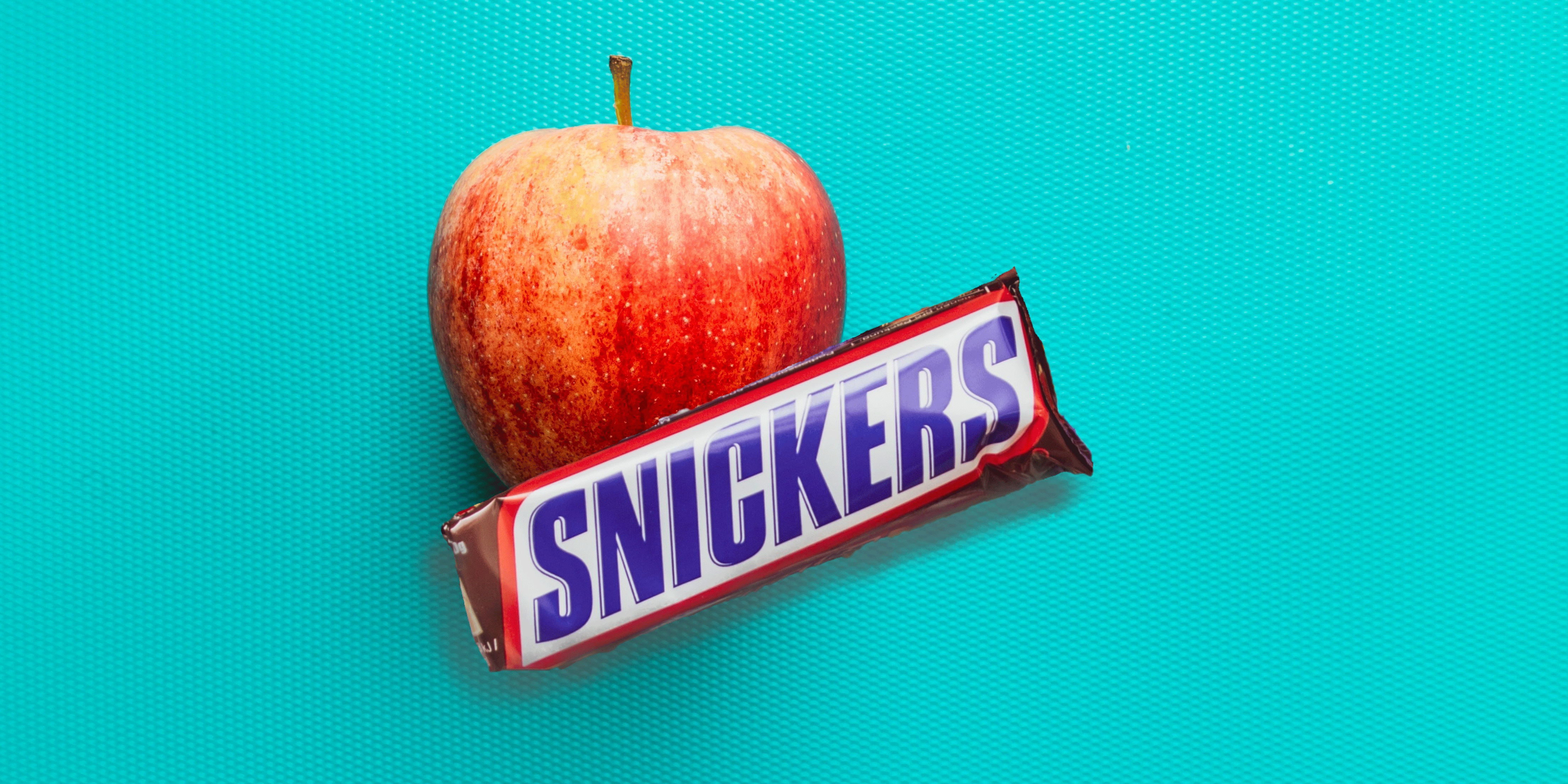Does It Really Matter If the Sugar Comes from an Apple or a Snickers?

When it comes to sugar, there seems to be a lot of confusion about where it comes from. Does it matter if the sugar is in an apple or a Snickers bar? The answer is yes - and no. Let's take a closer look at these two sources of sugar and then make some choices.
First, let's talk about something you may be familiar with: the Glycemic Index.
The Glycemic Index (GI) is a way of measuring how quickly a given sugar source converts to blood sugar. A medium apple scores a 40 on the GI scale, and a Snickers bar? Just 3 points higher at 43. But if you're looking for an excuse to trade in your apples for Snickers bars, I suggest you stop reading here. Seriously, turn back now.
Because the Glycemic Index fails to take into account the overall effect the whole food has on your blood sugar, and that matters. In fact, it matters so much that I'm writing this article on it because I see women everywhere ditching fruit along with their Peach Rings in a fervor to lose weight by abandoning foods with a high GI. Will keeping your blood sugar low by reducing your overall calorie intake of high-sugar, high calorie snacks? Yes, of course. But, ladies, ditch the Diet Cola and eat the damn apple. Let's talk about why.
Enter, the Glycemic Load (GL)
The Glycemic Load informs us of the overall impact of any given sugar consumption, taking the weight of the food and additional factors into consideration. For example, a single piece of candy might score very high on the Glycemic Index because it converts rapidly into blood sugar, but the piece may only have a few grams of sugar total, resulting in a lower overall Glycemic Load. So let's take a look at what comes along with the sugars found in a Snickers vs an apple.
One Medium Apple
- Calories: about 95
- Fat: 0
- Sodium: 0
- Protein: 1 g
- Carbohydrate: 25 g
- Sugar: 19 g
- Fiber: 4 g
- Nutrients: Vitamin C, Potassium, Calcium, Vitamin A, Iron, and Phytochemicals
- quercetin, a naturally-occurring antioxidant and anti-inflammatory
- pectin, a soluble fiber reducing constipation; lowering LDL, the "bad" cholesterol; and producing short chain fatty acids that may prevent chronic diseases.
Glycemic Index? 40
Glycemic Load? 10
One Snickers Bar
- Calories: 250
- Fat: 12 g
- Sodium: 125 mg
- Protein: 4 g (yay for peanuts!)
- Carbohydrate: 32 g
- Sugar: 28 g (4 more grams than the total daily sugar recommendation by the AHA and WHO)
- Fiber: 1 g
- Nutrients: Calcium and Potassium
Glycemic Index? 43
Glycemic Load? 14
So what?
Using the Glycemic Load scale as a guide, we can draw some conclusions:
- High: a GL of ≥20 points
- Medium: a GL of 11 to 19 points
- Low: a GL of ≤10 points
Apples barely fall into the "low" category for Glycemic Load, while Snickers hold a place in "medium." But I see you there, saying, "But still, a 10 is on the high end of the low section." So, if you're still worried about them apples, I also want to mention the effect of fiber. Fiber has a slowing effect on how quickly sugar spikes in the bloodstream. So as long as you're eating your apple with the peel intact, the benefits of the nutrients and fibers outweigh the cost.
Of course, foods with a lower Glycemic Index will always cost the lowest overall Glycemic Load, so keep eating your chicken and veggies. However, fruit is absolutely a responsible choice for healthy living. And it's nature's dessert, so take a second helping!
But between the Snickers and apple? There's no comparison. Maybe if we're looking at sugar alone, there isn't much of a difference. As always, the answer is more nuanced than a simple yes or no; however, your body sees both as sugar and will utilize them that way. But the bottom line is you're never looking at just one ingredient alone--that would be naïve. If you eat an apple or a Snickers, you're eating everything else with it. And in this case, the apple is the clear winner every time.
